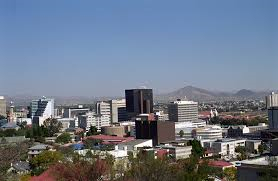www.hovedsteder.blogg.no is a Norway-based blog about the capitals of the world, with a focus on tourism and travel, the environment, diplomatic affairs, lifestyle, culture and entertainment, food and drink. See also our travel blog at www.minbestereise.blogg.no – Contact us at [email protected]
Windhoek
Rupingena said this figure does not include those visiting friends or going shopping, but only those walking to work and to school. He said their research was done during peak morning hours.
“Some of those people’s journey on foot starts at 4h00, just to make it to work on time at 8h00,” he said, adding that this may also contribute to social decay as parents who leave home early cannot give proper attention to their children.
Rupingena also said husbands or wives do not have time to spend together as one or both would often be tired after the long walk home from work. He said, on average, low income earners spend 24% of their income for mobility needs while 52 % of them cannot afford public transport. Former chief executive officer Ian Leyenaar of First National Bank of Namibia in 2013 stated that this sector consists of 45 000 people with a monthly income ranging from N$0 to N$1 500, and another 30 000 with an income of between N$1 500 and N$4 600.
Rupingena announced yesterday that, in a move to address the current shortage of public transport, a team from the municipality went on a trip to South Africa to purchase about 20 more buses. The buses are expected to cost N$ 80 million in total. Rupingena said the municipality will cover 50% of this amount, while government donated N$ 40 million to the municipality which it had received as a donation from the German government.
“Every citizen in this country should be able to access these buses. Even those in wheelchairs,” he said. Additionally, the city is extending its public bus transport service by introducing a pilot project scheduled for Saturday from the Women’s Centre in Katutura to Wernhill Park.
This service starts on 27 June 2015 and it will be running every Saturday between 10h00 and 16h00 at a regular fare of N$5 for a smartcard payment for one single journey. Along the route between the Women’s Centre to Wernhill Park, the bus will serve 10 intermediate stops.
The time intervals are about three minutes between each pick-up point. Rupingena pointed out that they have done a pilot study and taken a route from one stop to another several times to establish that the intervals are practical. Municipality spokesperson Lydia Amutenya in May said the City of Windhoek, and especially the informal areas, are growing at an alarming pace.
“It was estimated that sections of north-western Windhoek grows at a rate of 10% per annum, while the overall city population growth is estimated at 4% per annum,”Amutenya said.
Last year when The Namibian accompanied DTA president McHenry Venaani who joined bus users on a familiarisation tour of public transport as part of his political campaign, it emerged that the buses delay their occupants who arrive late for work. The buses mostly transport domestic and shop workers.
A random search on social networks by The Namibian yesterday revealed that although people appreciate the cheaper fares in comparison to taking a taxi, they would appreciate it if the bus would be on time.
They also pleaded that the city introduces a bus for Havanna, Goreagab and Otjomuise to minimise late arrival at work for people living in those areas.
Currently the municipality has 15 000 people using their 79 buses. Yesterday Rupingena said they only had 50 buses at their disposal, as many of them break down because they are old. He said when there is a shortage of buses, they change their time slots and do pick-ups earlier.


